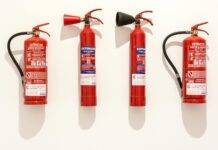
HSE Officer: Safety Quiz for HSE Officer with Answers (MCQs Test)
As workplaces become increasingly aware of the importance of safety measures, the role of Health, Safety, and Environment (HSE) officers becomes pivotal. HSE officers are responsible for ensuring that workplaces adhere to safety regulations, creating a secure environment for employees. To assess the competency and knowledge of HSE officers, conducting regular safety quizzes is essential.
Introduction to HSE Officer and their Role
Safety is paramount in any workplace setting. HSE officers play a crucial role in maintaining safety standards within an organization. Their responsibilities encompass various aspects, including conducting risk assessments, implementing safety protocols, and educating employees on safety procedures. By actively monitoring and mitigating potential hazards, HSE officers contribute significantly to accident prevention and employee well-being.
Purpose of Safety Quiz for HSE Officers
The primary objective of a safety quiz for HSE officers is twofold. Firstly, it serves as a tool to enhance their knowledge and awareness of safety practices. Secondly, it allows employers to assess the competency level of their HSE officers, ensuring they are equipped to handle potential safety challenges effectively. By regularly conducting such quizzes, organizations can maintain a high standard of safety within their premises.
Designing the Safety Quiz
Designing an effective safety quiz requires careful consideration of relevant topics and the format of questions. The quiz should cover essential areas such as occupational health and safety regulations, hazard identification, emergency procedures, and risk assessment. Utilizing a multiple-choice question format enables easy administration and evaluation of the quiz results.
Sample Questions for the Quiz
What does PPE stand for?
A) Personal Protective Equipment
B) Public Protection Environment
C) Potential Productive Equipment
D) Private Personnel Engagement
Answer: A) Personal Protective Equipment – PPE refers to protective gear designed to safeguard the wearer’s body against potential hazards in the workplace.
What is the primary purpose of a safety data sheet (SDS)?
A) Providing instructions for assembling equipment
B) Outlining emergency response procedures
C) Listing hazardous ingredients and safety precautions
D) Documenting employee attendance records
Answer: C) Listing hazardous ingredients and safety precautions – SDS contains vital information about the properties and hazards of chemicals, ensuring safe handling and storage.
When should a confined space entry permit be issued?
A) Only during regular working hours
B) Before entering any confined space
C) If the supervisor is unavailable
D) If deemed necessary by the HSE officer
Answer: B) Before entering any confined space – Issuing a permit ensures proper safety measures are in place before entering confined spaces, minimizing risks of accidents or injuries.
What does the acronym “LOTO” stand for in safety procedures?
A) Lockout Tagout Operations
B) Load on Top Override
C) Lookout for Obstacles
D) Lockout Takeout Options
Answer: A) Lockout Tagout Operations – LOTO refers to the process of isolating equipment from energy sources to prevent accidental startup during maintenance or repair.
What is the correct procedure in the event of a fire emergency?
A) Immediately evacuate the building without raising an alarm
B) Attempt to extinguish the fire independently
C) Activate the nearest fire alarm and evacuate following designated escape routes
D) Contact the building maintenance team for assistance
Answer: C) Activate the nearest fire alarm and evacuate following designated escape routes – Prompt evacuation and alerting authorities are critical steps in ensuring everyone’s safety during a fire emergency.
When should a safety harness be worn?
A) Only when working at extreme heights
B) Only if specifically requested by the supervisor
C) Whenever there is a risk of falling from a height
D) During routine office tasks
Answer: C) Whenever there is a risk of falling from a height – Safety harnesses provide protection against falls and should be worn whenever working at elevated positions.
What is the purpose of conducting a Job Safety Analysis (JSA)?
A) To assess employee performance
B) To identify potential hazards associated with a specific task
C) To streamline production processes
D) To conduct employee training sessions
Answer: B) To identify potential hazards associated with a specific task – JSA helps identify potential risks and develop appropriate safety measures to mitigate them before starting work.
What is the recommended action if a spill of hazardous chemicals occurs in the workplace?
- A) Ignore the spill unless it poses an immediate threat
- B) Clean up the spill using available materials
- C) Notify the supervisor and evacuate the area if necessary
- D) Continue working while avoiding the spill area.
- Answer: C) Notify the supervisor and evacuate the area if necessary – Proper containment and cleanup procedures must be followed to minimize exposure and prevent accidents or injuries.
- What is the purpose of conducting a toolbox talk?
- A) To discuss upcoming company events
- B) To review safety procedures and address specific hazards before starting a task
- C) To brainstorm ideas for improving workplace efficiency
- D) To conduct team-building exercises
- Answer: B) To review safety procedures and address specific hazards before starting a task – Toolbox talks are brief safety meetings conducted to ensure all workers are aware of potential risks and preventive measures before beginning work.
- When should emergency eyewash stations be used?
- A) To wash hands after using the restroom
- B) In case of chemical splashes to the eyes
- C) To clean personal protective equipment (PPE)
- D) As a drinking water source during breaks
- Answer: B) In case of chemical splashes to the eyes – Emergency eyewash stations provide immediate irrigation to the eyes in the event of chemical exposure, helping to minimize damage and prevent further injury.
- What does the acronym “MSDS” stand for?
- A) Material Safety Data Sheet
- B) Mandatory Safety Documentation Standards
- C) Maintenance and Safety Deployment System
- D) Manufacturing Safety Data Specification
- Answer: A) Material Safety Data Sheet – MSDS provides detailed information about the properties, hazards, and safe handling procedures for hazardous substances used in the workplace.
- What is the purpose of a safety inspection?
- A) To identify potential safety hazards and ensure compliance with regulations
- B) To evaluate employee performance
- C) To conduct equipment maintenance
- D) To assess office cleanliness
- Answer: A) To identify potential safety hazards and ensure compliance with regulations – Safety inspections help proactively identify and address safety issues to prevent accidents and injuries in the workplace.
- What are the three elements of the “safety triangle”?
- A) Management commitment, employee engagement, and hazard identification
- B) Safety training, emergency response, and workplace ergonomics
- C) Incident reporting, safety incentives, and hazard control measures
- D) Safety policies, environmental sustainability, and financial stability
- Answer: A) Management commitment, employee engagement, and hazard identification – The safety triangle represents the interconnected elements essential for maintaining a strong safety culture within an organization.
Importance of Continuous Learning for HSE Officers
Continuous learning is essential for HSE officers to stay abreast of evolving safety standards and regulations. By regularly updating their knowledge and skills, HSE officers can effectively identify and mitigate risks in the workplace. Engaging in professional development opportunities ensures they remain competent and capable of fulfilling their duties efficiently.
Conclusion
Safety quizzes serve as valuable tools for evaluating the knowledge and competency of HSE officers. By actively engaging in such assessments, HSE officers can enhance their understanding of safety practices and contribute to creating safer work environments. Continuous learning and improvement are integral to the role of an HSE officer, ensuring they are well-equipped to handle safety challenges effectively.
Safety Manager: Safety Quiz for Safety Manager with Answers (MCQs Test)
Safety Supervisor: Safety Quiz for Safety Supervisor with Answers (MCQs Test)
Safety Engineer: Safety Quiz for Safety Engineer with Answers (MCQs Test)
Safety Officer: Safety Quiz for Safety Officer with Answers (MCQs Test)
FAQs (Frequently Asked Questions)
- How often should safety quizzes be conducted for HSE officers?
- Safety quizzes should ideally be conducted regularly, depending on the organization’s policies and industry standards. Quarterly or bi-annual assessments are common practices.
- Are safety quizzes mandatory for all HSE officers?
- While it may not be mandatory in all organizations, conducting safety quizzes is highly recommended to ensure HSE officers maintain a high level of competency and awareness.
- Can safety quizzes be customized based on specific industry requirements?
- Yes, safety quizzes can and should be tailored to address industry-specific hazards and regulations to ensure relevance and effectiveness.
- What is the role of supervisors in facilitating safety quizzes for HSE officers?
- Supervisors play a crucial role in coordinating and overseeing safety quizzes, providing support to HSE officers throughout the assessment process.
- How can organizations encourage HSE officers to actively participate in safety quizzes?
- Organizations can incentivize participation through recognition, rewards, or incorporating quiz results into performance evaluations, emphasizing the importance of safety knowledge and competency.





















